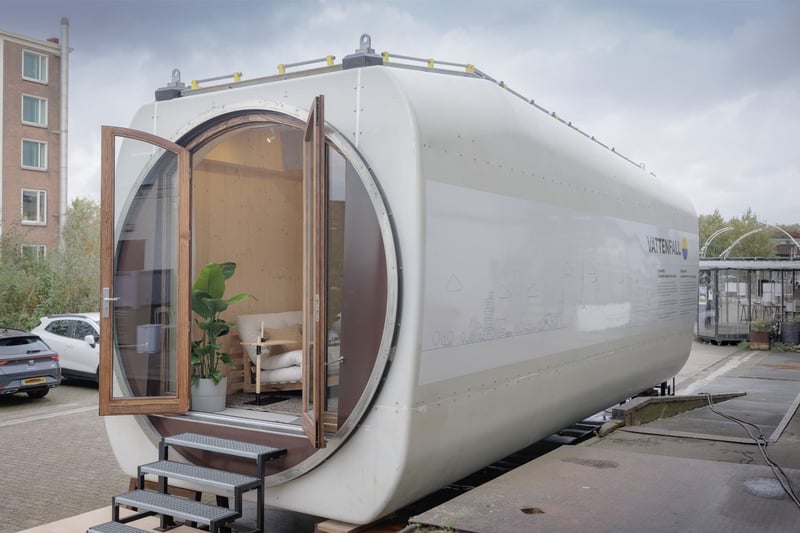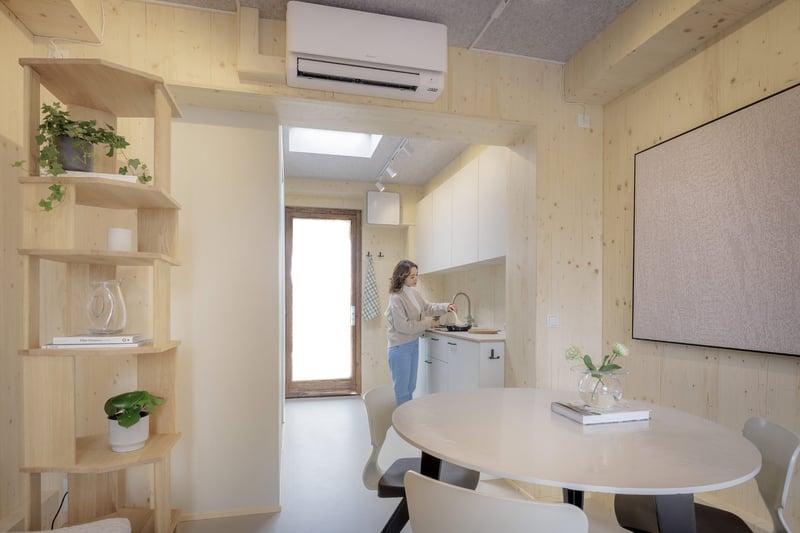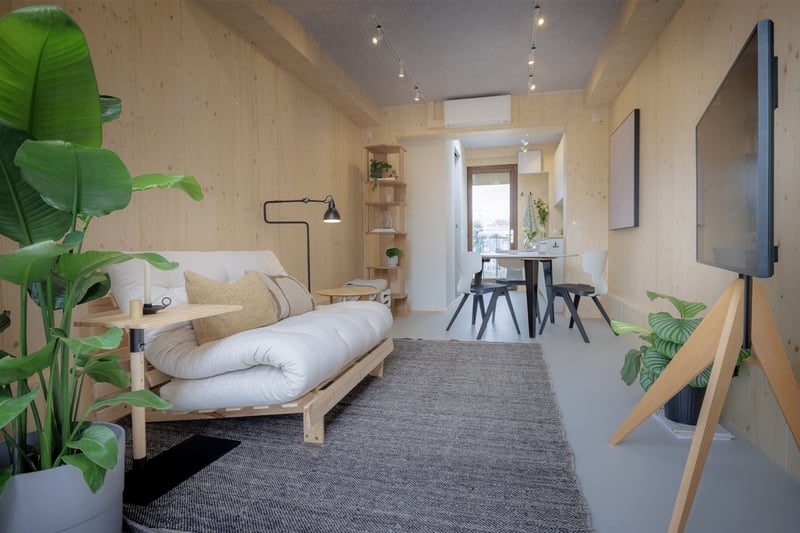
Tiny house
The Tiny house is a converted nacelle – the structure located at the top of a wind turbine tower that houses the machinery.
With the Tiny house, Vattenfall demonstrates how materials can be reused in innovative ways
Externally, it is evident that the Tiny house was originally part of a wind turbine. However, the interior has been meticulously designed to ensure a comfortable and homely stay. The amenities include a kitchen, bathroom, and living space. Additionally, the house is equipped with advanced features such as a heat pump, solar panels, and a solar water heater.
Prioritising reuse
In the coming decades, thousands of wind turbines will be decommissioned or replaced. While most components – including the foundation, tower, gearbox, and generator – are primarily made of metal or concrete and are therefore recyclable, traditional recycling methods such as steel remelting require significant energy and generate emissions. A more sustainable approach would be to reuse these materials with minimal processing.
Circularity at Vattenfall
Vattenfall recognises that sustainable business practices are crucial for the continued growth of wind energy and long-term competitiveness. Currently, 85–90% of a wind turbine is recyclable, and Vattenfall has embedded circular principles throughout the entire wind farm lifecycle – from design and development to construction, operation, and ultimately decommissioning.
Recycling of hydraulic oil
At Lillgrund wind farm in Sweden, 12,000 litres of hydraulic oil have been recycled into new base oil for the manufacture of new oil products. The oil was collected by Stena Recycling and sent to Avista Oil A/S in Kalundborg, Denmark, where it was refined into new base oil instead of being incinerated.
Compared with producing new base oil from crude oil, 800 kg of CO2 per m3 oil was saved. In total, the project saved 9.6 tonnes of CO2 equivalent. The process is recommended by the Oil4Life initiative, driven by Thomas Stalin, as one way to achieve a more sustainable use of resources and contribute to a circular economy. The process is now planned as standard for all Vattenfall plants in Sweden.
Low emission steel in Nordlicht wind farm
56 of the 112 turbines installed at the Nordlicht offshore wind farm in Germany will be made in part from low-emission steel, significantly reducing the carbon footprint of the towers. The low-emission steel is based on 100% steel scrap processed in an electric furnace, which in turn is powered by 100% renewable energy. This reduces the carbon footprint by 66% compared to heavy steel plates produced by conventional steelmaking.
Read more: Vattenfall and BASF partner with Vestas for low-emission steel wind turbines in Germany
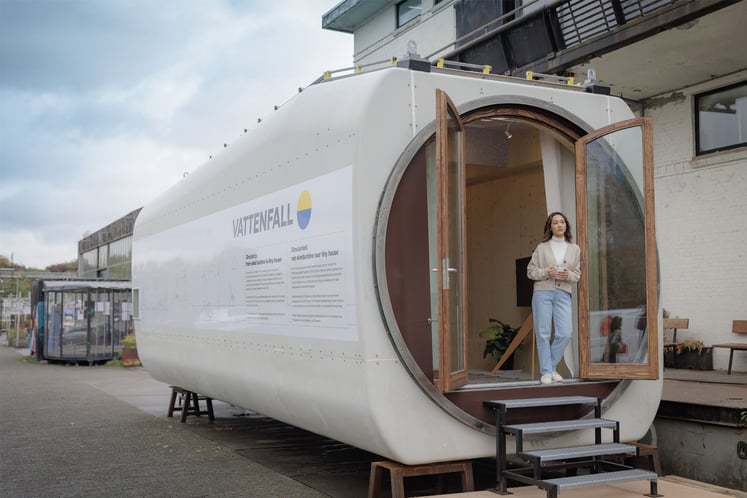
About circularity
Read more about circular projects across Vattenfall in the brochure and how we are transforming to a more circular business.
Sustainability report
Our sustainability report is part of the annual report.
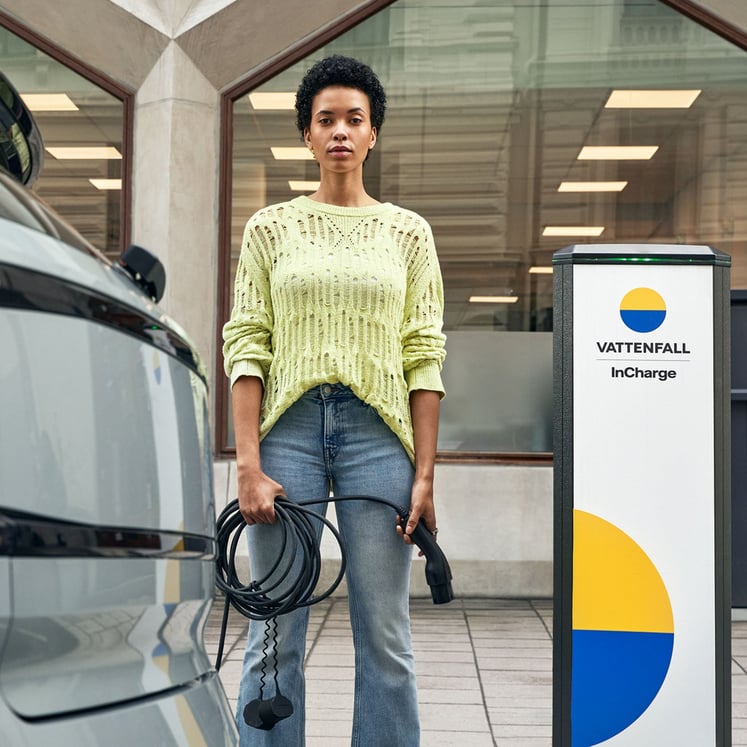
See also

We have decided to make the biggest leap yet to reduce the impact of climate change.
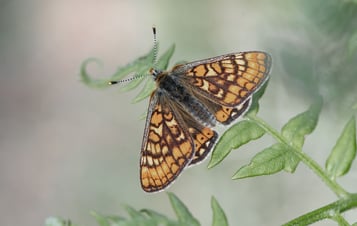
Biodiversity and nature protection are a priority at Vattenfall.
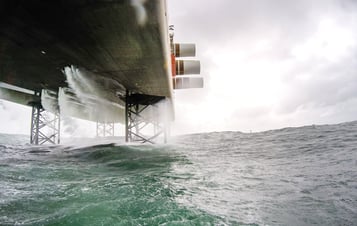
Climate is at core of Vattenfall’s strategy and we are focused on one goal.


